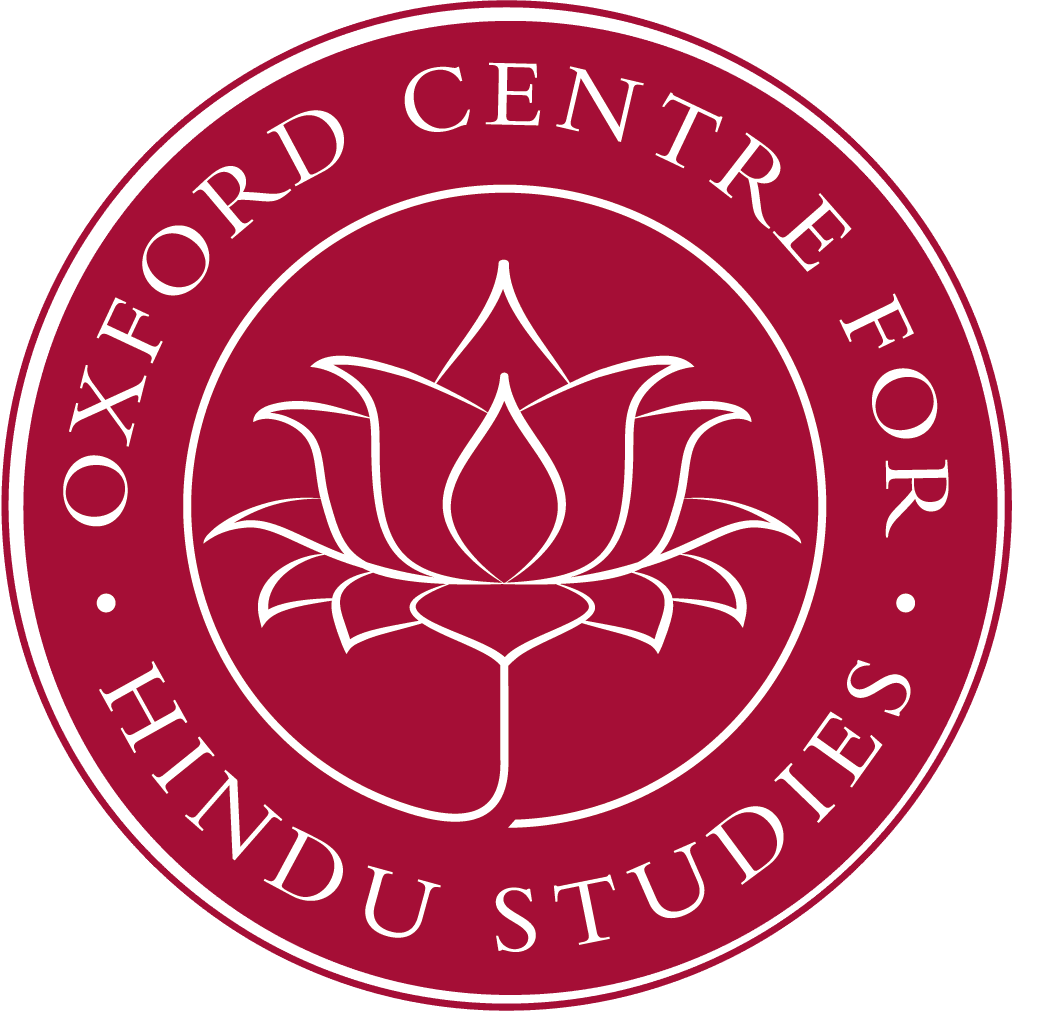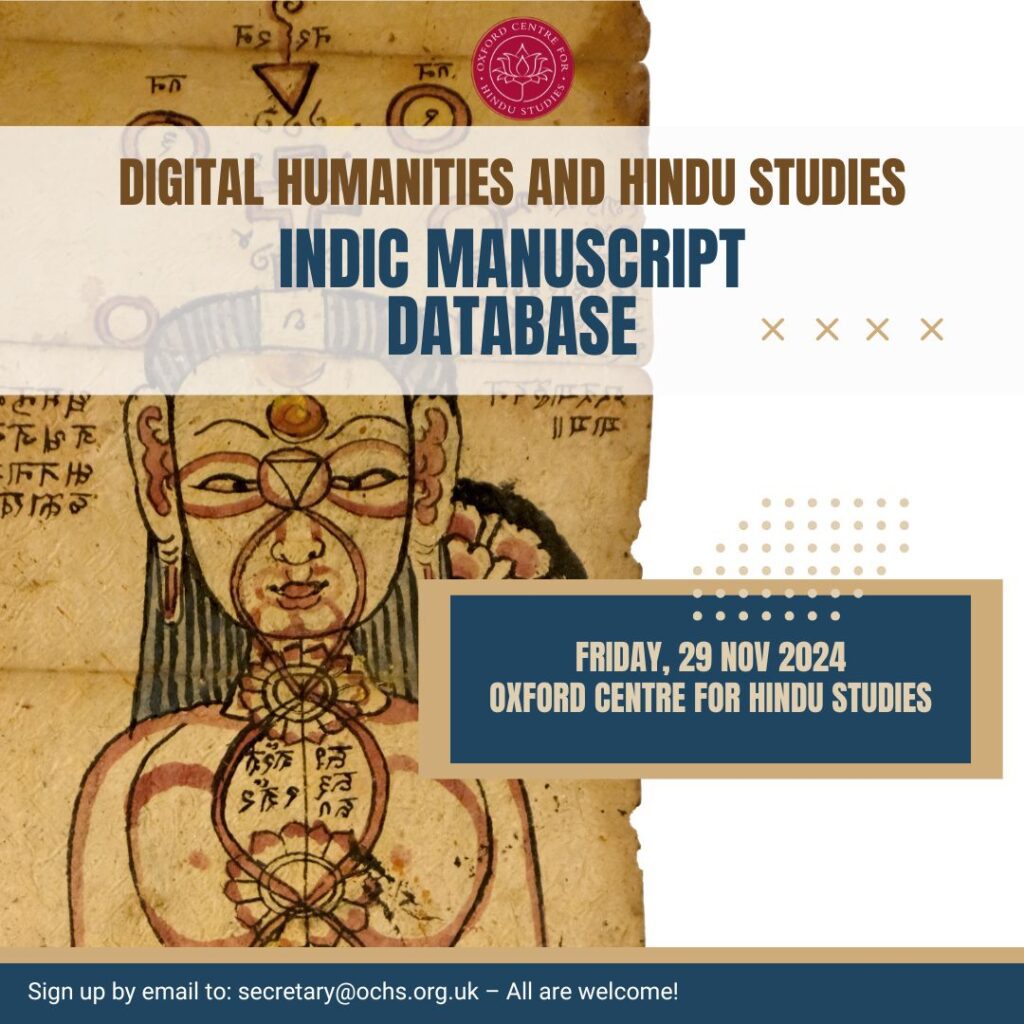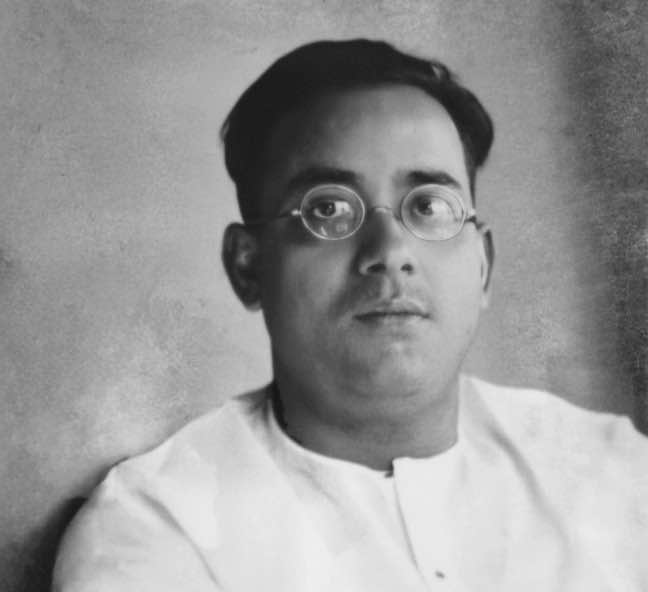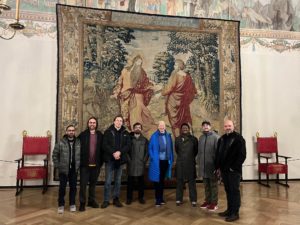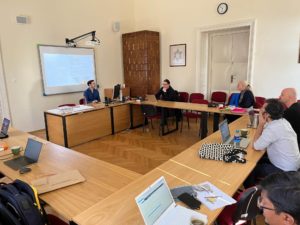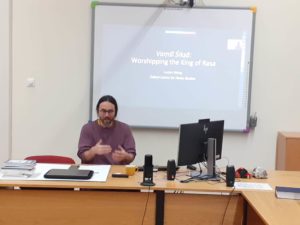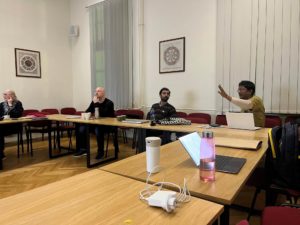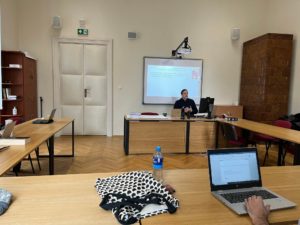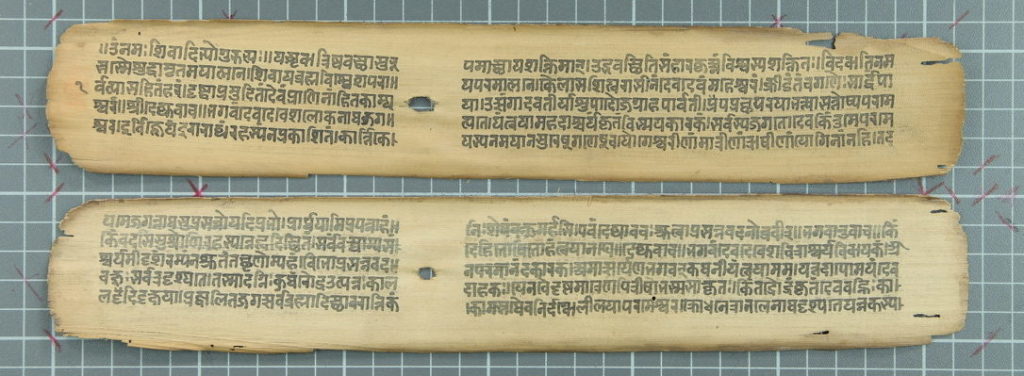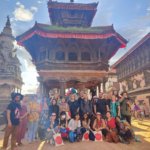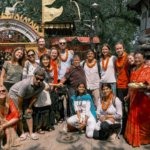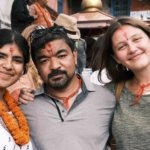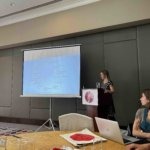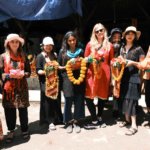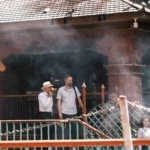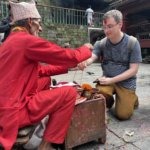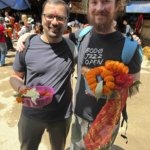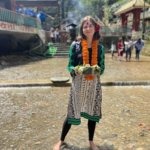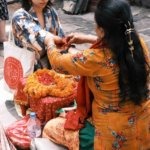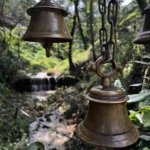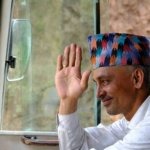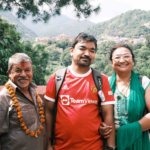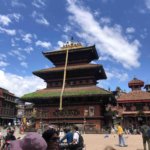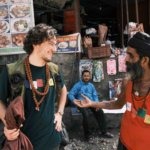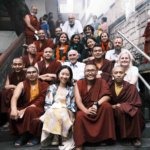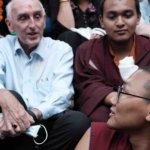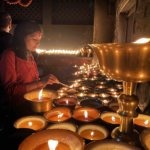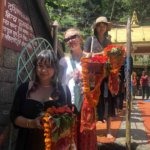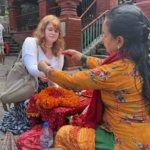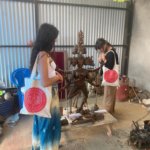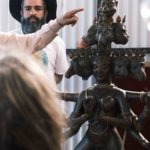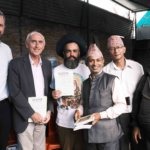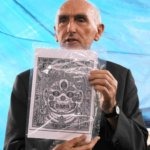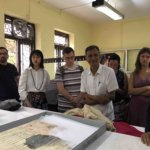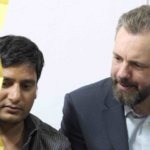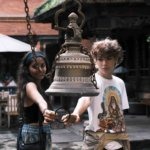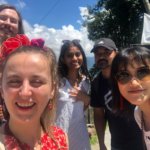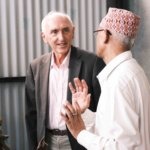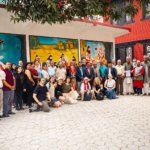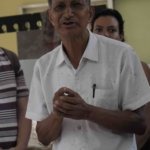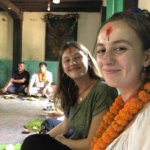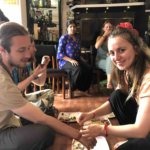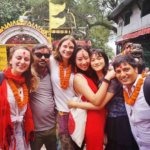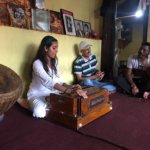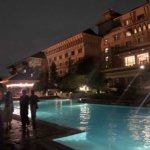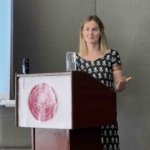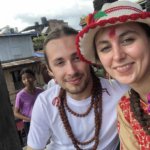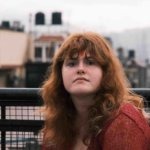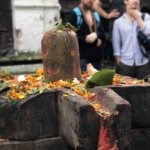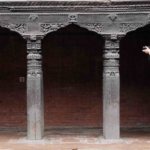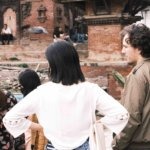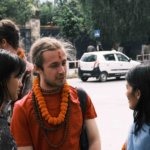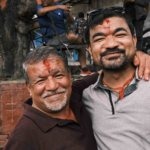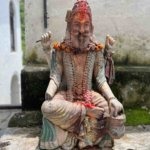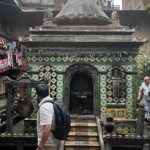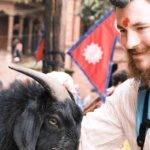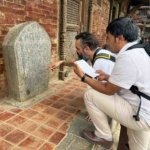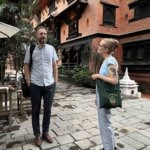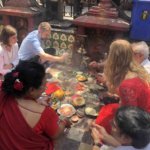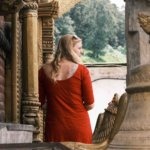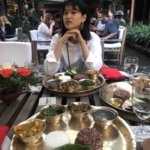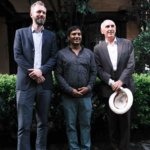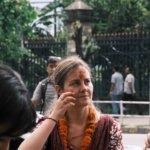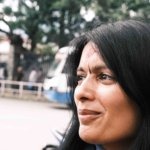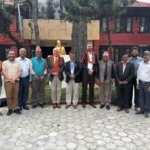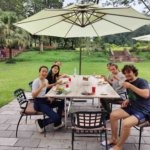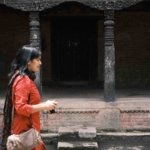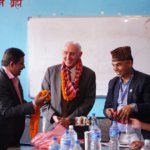10.00-10.15 Welcome
Professor Gavin Flood, FBA
Campion Hall
10.15-11.00 The Netratantra: Its Vision and Themes
Professor Gavin Flood, FBA
Campion Hall
The Netratantra, the ‘Tantra of the Eye’, is an important tantric text in Kashmir and Nepal, dating from around the early ninth century, and widely disseminated during the eleventh and probably tenth centuries. The text takes its name from Śiva as Netranātha or ‘Lord of the Eye’. However, the text is a ‘universal’ (sarvasāmānya-) tantra, which overrides the distinctions between various tantric traditions. The central deity of the Netratantra is Amṛteśvara, whose consort is Lakṣmī/Śrī called Amṛtalakṣmī in ritual manuals based on the text. After an initial chapter in which Amṛteśvara, referred to as Bhairava, responds to the questions of the Goddess by extolling the virtues and powers of Śiva’s eye, the text presents a number of visualisations of a number of deities, catholic in its range, not only from the systems of the Mantramārga but from Vaiṣṇava traditions as well. Furthermore, a strong Śākta influence is evident in the text with its many references to female deities and practices characteristic of the Kulamārga, e.g. chapter 7 on the subtle visualising meditation and chapter 20 on yoginīs.
Professor Gavin Flood FBA (Oxford), Dr Bjarne Wernicke-Olesen (Oxford) and Dr Rajan Khatiwoda (Heidelberg) are currently working on a fully annotated translation of the Netratantra with an introduction in two volumes in the Routledge Studies in Tantric Traditions series. The project to study the text will especially focus on the theme of models of the person or self that the text entails. Based on close philological reading, we hope to account for different understandings of the person implicit in the text.
Gavin Flood is a Professor of Hindu Studies and Comparative Religion in the Theology and Religion Faculty and academic director of the Oxford Centre for Hindu Studies. Gavin read Religious Studies and Social Anthropology at Lancaster University and taught at the universities of Wales (Lampeter) and Stirling before coming to Oxford. He was elected to membership of the British Academy in 2014. His research interests are in medieval Hindu texts (especially from the traditions of Śiva), comparative religion, and phenomenology. He is general series editor of the Oxford History of Hinduism and currently developing closer textual work on the Netratantra.
11.00-11.15 Tea and Coffee
11.15-12.00 Digital Humanities and Hindu Studies: Building a Śākta Manuscript Database
Dr Ulrik Lyngs, Michael Elison
Campion Hall
New tools from the digital humanities hold considerable promise to augment traditional scholarly analysis in Hindu Studies. Compared to traditional workflows in which scholars manually collate, compare and critically edit manuscripts into edited volumes, computational methods allow many time-consuming tasks to be automated, and new understandings and insights based on the analysis of large volumes of text can be obtained that would previously have been impossible.
In this talk, I present our work-in-progress on an OCHS Manuscript Database using the Netra Tantra as an example. This database will make thousands of manuscripts available, drawn from the OCHS Kathmandu digitisation project, the National Archives of Nepal, the ASA archives, and more. Compared to existing major manuscript databases such as the Cambridge Digital Library, our database will offer a more advanced interface which, for example, allow users to see transliterated and translated texts side-by-side with images of the original manuscripts. Over time, the database will include computational tools that allow easy textual analysis and concordance, and automatic generating of formatted PDFs or Word files with customised content of specific manuscripts.
Ulrik Lyngs is a Carlsberg Foundation Oxford Visiting at the University of Oxford’s Human Centred Computing group, and a Junior Research Fellow of Linacre College. He has a highly interdisciplinary background, with a PhD in Computer Science (University of Oxford), an MA in the study of religion and cognitive psychology (Aarhus University), and an MSc in evolutionary anthropology (University of Oxford). His PhD research on attention and self-regulation in human-computer interactions received the Doctoral Prize from the Engineering and Physical Sciences Research Council. He has previously been a producer at HowTheLightGetsIn, the world’s largest philosophy and music festival.
12.00-12.30 Readings in the Netratantra: Chapter 7 on Subtle Visualising Meditation (sūkṣmadhyāna)
Dr Bjarne Wernicke-Olesen
Campion Hall
The lecture will present a reading and discussion of significant passages from the Netratantra’s chapter 7 on subtle visualising meditation. The chapter is significant in that it presents two different anthropologies and systems of visualization, which the Trika commentator Kṣemarāja refers to as the tantric system (tantraprakriyā) and the Kula system (kulaprakriyā). As opposed to the more body-rejecting practices of classical yoga, the Kula system or what may be termed a ‘Śākta anthropology’ of tantric yoga aims at the affirmation and divinization of the body. This Śākta model of the human is first mentioned in the Netratantra’s chapter 7 on subtle visualising meditation (sūkṣmadhyāna). The Netratantra is also the first to mention the Kulamārga and to teach a system of six bodily centers called cakras, which the meditating yogi is supposed to pierce with his inherent power or śakti. This Śākta anthropology is introduced in the first few verses of chapter seven and then elaborated. The text presents an early Śākta appropriation of older yogic models of ‘knots’ (granthis), ‘supports’ (ādhāras) etc. foregrounding the central channel (suṣumnā) and the notion of how the yogi causes the ascent of his inner power as an early form of kuṇḍalinīyoga. Furthermore, the yogi’s inner power (śakti) was also conceived of in terms of sound or inner vibration (nādasūcī, ‘the needle of sound’).
Bjarne Wernicke-Olesen is Research Lecturer at the Oxford Centre for Hindu Studies and a member of the Theology and Religion Faculty where he teaches Sanskrit, Pali and Indian religions. He is the research director and manager for the Śākta Traditions research programme. His book publications include an introduction to Hinduism (2015), translations of the Bhagavadgītā (2009) and the Haṭhapradīpikā (2022) as well as a Danish Sanskrit Grammar and Reader in two volumes (2014). He is the editor of Goddess Traditions in Tantric Hinduism (2016) and has written a number of articles on Śāktism, yoga and meditation in Danish, German and English. He is currently working on several book projects, including an English translation and annotated edition of the Netratantra (based on the oldest available Nepalese manuscript, NAK MS 1-285, NGMPP Reel No. B 25/5 from 1200 CE) in two volumes for the Routledge Tantric Studies series together with Dr Rajan Khatiwoda and Professor Gavin Flood.
12.30-13.00 Tradition of Manuscript Production: Nepalese Recension of the Netratantra in the National Archives of Nepal
Dr Rajan Khatiwoda
Campion Hall
Not only has the Kathmandu Valley preserved an ancient compendium of Suśruta (Suśrutasaṃhitā) copied in 878 CE, but also the earliest surviving Śaiva text, Niśvāsatattvasaṃhitā copied sometime in the 9th century. Similarly, the National Archives of Nepal houses a well-preserved recension of the Netratantra ‘Tantra of the Eye’, an important text in Kashmir dating from around the early ninth century. Of the four Nepalese Netra-manuscripts, the oldest ‘Mṛtyujidamṛtīśavidhāna’ was copied in 1200 CE. The second oldest ‘Amṛteśvarapūjana’ was commissioned by Abhaya Malla in 1216 CE, most likely to protect his father, King Ari Malla, who was said to be dying. The lecture will attempt to shed light on the manuscript sources (as well as their scribal and palaeographical features) for the study of the Netatrantra.
Rajan Khatiwoda currently holds the position of Chief Scientific Documentation Coordinator in the Nepal Heritage Documentation Project (NHDP) at the Heidelberg Academy of Sciences and Humanities (HAdW). He is also the Honorary Leader of the Kathmandu Office of the Śākta Traditions Project run under the Oxford Centre for Hindu Studies (OCHS) and a Research Fellow at OCHS affiliated with the Śākta Traditions research programme. Khatiwoda studied Classical Indology at Heidelberg University, from where he received his PhD in 2017. His dissertation deals with the formation and enforcement of the Mulukī Ain, Nepal’s first legal code promulgated in 1854. From 2013 to 2016, he was part of the Cluster´s Project A14 “Transcultural Legal Flows in 18th- and 19th-Century South Asia.” Since 2014, Khatiwoda is research associate at the South Asian Institute, Heidelberg University, and the Research Unit “Documents on the History of Religion and Law of Pre-modern Nepal,” Heidelberg Academy of Sciences and Humanities. Previously, he worked as a research assistant and cataloguer for the Nepalese-German Manuscript Cataloguing Project (NGMCP) and the Nepal Research Centre (NRC) in Kathmandu for nine years (2004–2013).
13.00-14.30 Lunch (on your own)
14.30-15.00 Book presentation and reception:
Goddess Traditions in India: Theological Poems and Philosophical Tales in the Tripurārahasya (Routledge Hindu Studies Series)
Dr Silvia Schwarz Linder
OCHS Library
This new book on the Tripurārahasya, a South Indian Sanskrit work which occupies a unique place in the Śākta literature, is a study of the Śrīvidyā and Śākta traditions in the context of South Indian intellectual history in the late middle ages. Associated with the religious tradition known as Śrīvidyā and devoted to the cult of the Goddess Tripurā, the text was probably composed between the 13th and the 16th century CE. The analysis of its narrative parts addresses questions about the relationships between Tantric and Purāṇic goddesses. The discussion of its philosophical and theological teachings tackles problems related to the relationships between Sākta and Śaiva traditions. The stylistic devices adopted by the author(s) of the work deal uniquely with doctrinal and ritual elements of the Śrīvidyā through the medium of a literary and poetic language. This stylistic peculiarity distinguishes the Tripurārahasya from many other Tantric texts, characterized by a more technical language.
Silvia Schwarz Linder has a PhD in South Asian Studies (University of Vienna). She has lectured in the past at the Leopold-Franzens-Universität in Innsbruck and at the University Ca’ Foscari in Venice. She was Research Associate at the Institut für Indologie und Zentralasienwissenschaften of the University of Leipzig, and is currently Research Fellow at the OCHS. Her interests focus on the Tantric religious traditions of the Śrīvidyā and of the Pāñcarātra, specifically on the philosophical and theological doctrines expressed in the relevant South Indian Sanskrit textual traditions. She has also translated into Italian texts from the Sanskrit narrative and devotional literature, for editions aimed at a general readership.
15.00 Reception
